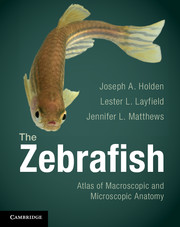Book contents
- Frontmatter
- Contents
- Preface
- Acknowledgments
- Chapter 1 Introduction
- Chapter 2 Cross section and longitudinal section atlas
- Chapter 3 Integument (skin)
- Chapter 4 Digestive system
- Chapter 5 Respiratory system
- Chapter 6 Circulatory system
- Chapter 7 Liver and gallbladder
- Chapter 8 Pancreas
- Chapter 9 Endocrine organs
- Chapter 10 Kidney
- Chapter 11 Reproductive system
- Chapter 12 Sensory systems
- Chapter 13 Central nervous system
- Chapter 14 Miscellaneous structures
- Chapter 15 Musculoskeletal system
- Index
- References
Chapter 1 - Introduction
Published online by Cambridge University Press: 05 February 2013
- Frontmatter
- Contents
- Preface
- Acknowledgments
- Chapter 1 Introduction
- Chapter 2 Cross section and longitudinal section atlas
- Chapter 3 Integument (skin)
- Chapter 4 Digestive system
- Chapter 5 Respiratory system
- Chapter 6 Circulatory system
- Chapter 7 Liver and gallbladder
- Chapter 8 Pancreas
- Chapter 9 Endocrine organs
- Chapter 10 Kidney
- Chapter 11 Reproductive system
- Chapter 12 Sensory systems
- Chapter 13 Central nervous system
- Chapter 14 Miscellaneous structures
- Chapter 15 Musculoskeletal system
- Index
- References
Summary
Utility of zebrafish as an animal model for study of oncogenesis and developmental defects
The development of animal models for a variety of neoplasms has greatly facilitated our understanding of oncogenesis and the relationship between somatic and germ line mutations with tumor growth and development. While mammalian models for developmental abnormalities and neoplasia would appear most appropriate, they are often hindered by issues of cost, latency to expression of phenotype, and animal care issues. Hence, non-mammalian but vertebrate organisms have a number of advantages. The zebrafish (Danio rerio) has emerged as a useful model system for the study of cancer biology because it has a reduced latency to expression of phenotype, a relatively low cost, a susceptibility to many tractable techniques for analysis of gene function, and the species amenability to oncogenic and chemical modifiers. In addition, early zebrafish embryos are optically clear, allowing observation of tumor development and organogenesis. This allows in vivo examination of cell and tissue behavior. A number of zebrafish models of neoplasia have been developed for both inactivating mutations and for the expression of human oncogenes including C-MYC, BRAF, and N-ras, which are known to be associated with a variety of human neoplasms.
The majority of living fishes including the zebrafish are members of the division Teleostei. This division represents the most advanced of the living bony fishes accounting for 96% of all fish species. Teleosts occur in both fresh and marine water habitats. The order Cypriniformes includes the zebrafish and other popular aquarium fishes including the goldfish and koi. Because these fishes are relatively easy to raise and the maintenance of colonies of these fishes is straightforward, members of this order have become popular for hobbyists and researchers alike. The zebrafish is the standard research animal for developmental genetics as well as being a popular species for the aquarium enthusiast.
- Type
- Chapter
- Information
- The ZebrafishAtlas of Macroscopic and Microscopic Anatomy, pp. 1 - 3Publisher: Cambridge University PressPrint publication year: 2013

